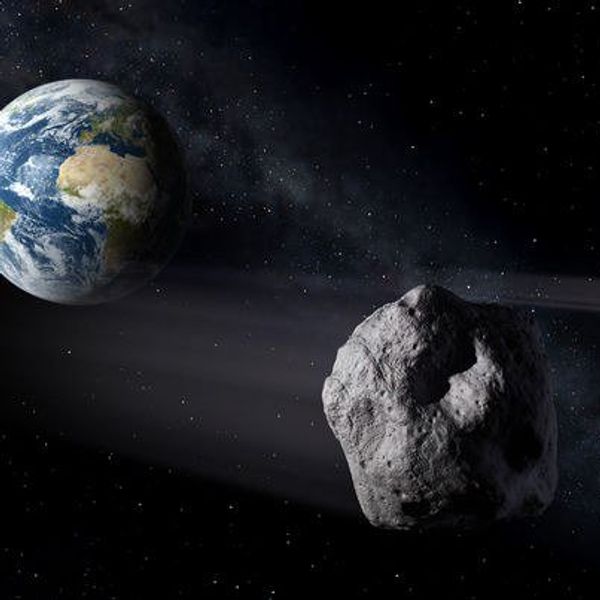On July 20, 1969, Neil Armstrong radioed home, "The eagle has landed." That day marked an incredible achievement for science as the first human stepped foot onto the moon. Children will be taught for hundreds of years about that historic moment. Of course, NASA didn't call it quits after that historic mission. Since then, the International Space Station has been developed, rovers have landed on Mars and telescopes have revealed earth like planets all around the Universe. This past week another awesome accomplishment has been added to the list.
That is a picture of Pluto. A dwarf planet that we didn't even know existed eighty years ago, and now the spacecraft New Horizons has flown by it taking ten years worth of photos and giving us a whole treasure trove of information about the dwarf planet and our galaxy.
The probe carries with it the ashes of Clyde Tombaugh who was the first man to discover the planet. The American astronomer found the planet in 1930, at the age of 24, at the Lowell Observatory in Arizona. Back then, all he could see was a small speck of light. This speck of light was an incredible discovery that would catapult Tombaugh into the astronomy textbooks. Now Tombaugh's discovery has allowed his ashes to come within eight thousand miles of the dwarf planet he discovered so long ago. However, this accomplishment was not a simple one.
The New Horizons mission took a whopping 15 years to reach this point, and the mission will continue for at least the next few years as scientists dissect the massive amount of information that the probe has sent back.
Almost ten years' worth of the mission was simply getting New Horizons to Pluto. The probe started its journey on January 19, 2006 after two cancelled launches due to wind conditions and a power outage. Since then, the probe has been hurtling through space faster than any spacecraft to date, flying past Pluto at over 30,000 mph. This incredible speed means that even minuscule pieces of debris would tear through the New Horizons and end the mission. Through a combination of luck and detailed planning, the New Horizons was able to make it through all of these obstacles and is now sending back incredible information.
Although Pluto isn't considered a planet anymore, it is still key to understanding the galaxy. Not only will New Horizons provide information about the dwarf planet, but it will also send a large amount of information on the Kuiper Belt — a region of the Solar System beyond the planets. This should give scientists greater insight into how our galaxy formed and unlock even more mysteries. Teamwork was what allowed this impressive feat. NASA worked closely with John Hopkins Applied Physics Laboratory and the Southwest Research Institute.
Once again, NASA plans to continue space exploration after this mission. Right now the Mars rover Curiosity is still roaming around Mars and studying our galaxy. In 2025, NASA hopes to send astronauts to an asteroid. By 2030, NASA hopes to have humans step foot on Mars. These are only a few of the mission to look forward to and until then I think I will sit back and look at some of these amazing photos.


























